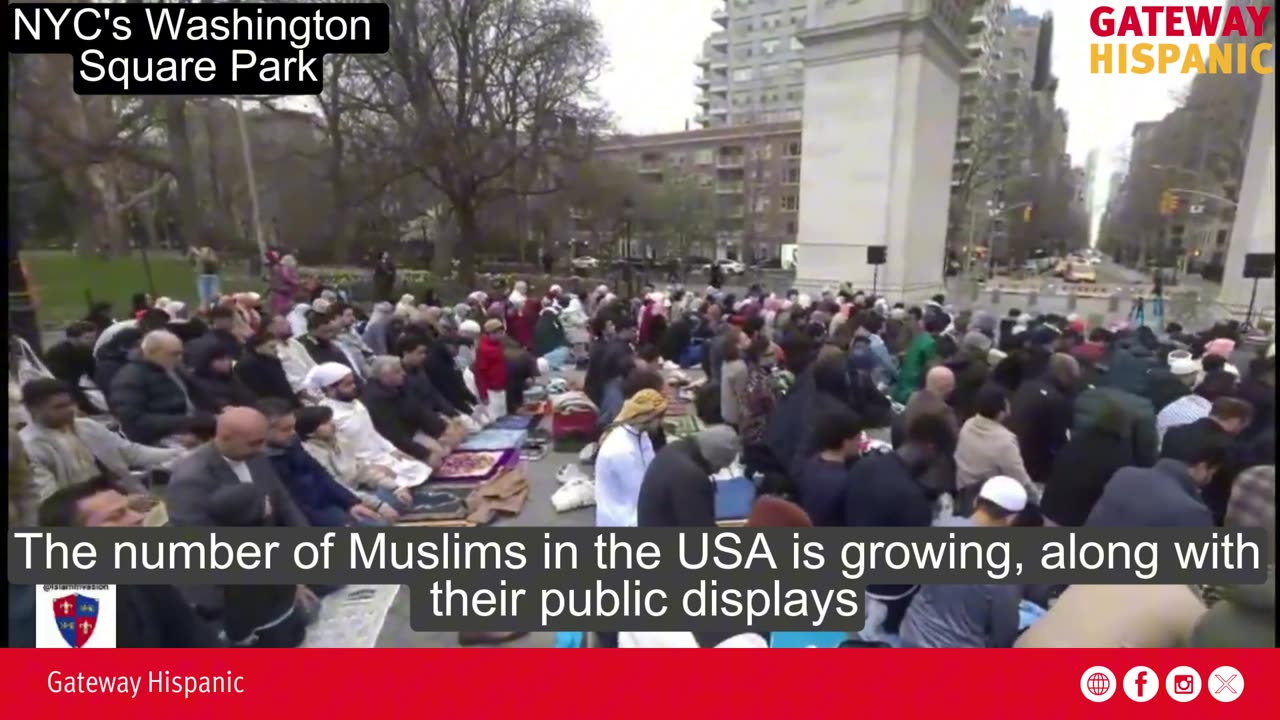Premium Only Content

Muslims take to public prayer as a show of power
Over the past five years, the Muslim population in the United States has experienced steady growth, driven primarily by immigration and higher birth rates compared to other religious groups.
Growth of the Muslim Population
In 2020, the U.S. Religion Census estimated there were approximately 4.45 million Muslims in the country, representing around 1.34% of the total population.
By 2025, it is estimated that Muslims will make up about 1.2% of the U.S. adult population.
Projections indicate that by 2050, the Muslim population in the U.S. could reach 8.1 million, representing 2.1% of the total population.
Factors Contributing to the Growth
Immigration: A significant proportion of Muslims in the U.S. are first-generation immigrants, with many coming from South Asia, the Middle East, and Africa.
Birth Rates: Muslim families tend to have higher birth rates compared to the national average, contributing to population growth.
Geographic Distribution
American Muslims are spread throughout the country, with higher concentrations in states such as New York, California, Illinois, New Jersey, and Texas.
Diversity Within the Muslim Community
The Muslim community in the U.S. is diverse, including African Americans, South Asians, Arabs, Sub-Saharan Africans, and other ethnic groups.
Future Outlook
The Muslim population in the U.S. is expected to continue growing in the coming decades, which could have significant implications in areas such as politics, education, and culture.
-
 1:49
1:49
Gateway Hispanic
19 hours agoJD Vance: This is very simple, open the government
18 -
 2:01:08
2:01:08
LFA TV
23 hours agoTHE RUMBLE RUNDOWN LIVE @9AM EST
33.8K2 -
 57:26
57:26
X22 Report
2 hours agoMr & Mrs X - The Food Industry Is Trying To Pull A Fast One On RFK Jr (MAHA), This Will Fail - EP 14
15.8K9 -
 1:06:36
1:06:36
Wendy Bell Radio
5 hours agoPet Talk With The Pet Doc
4.66K13 -
 30:58
30:58
SouthernbelleReacts
2 days ago $3.50 earnedWe Didn’t Expect That Ending… ‘Welcome to Derry’ S1 E1 Reaction
2.51K4 -
 13:51
13:51
True Crime | Unsolved Cases | Mysterious Stories
4 days ago $7.62 earned7 Real Life Heroes Caught on Camera (Remastered Audio)
5K1 -
 LIVE
LIVE
Total Horse Channel
11 hours ago2025 IRCHA Derby & Horse Show - November 1st
45 watching -
 4:19
4:19
PistonPop-TV
6 days ago $0.90 earnedThe 4E-FTE: Toyota’s Smallest Turbo Monster
3.08K -
 43:07
43:07
WanderingWithWine
5 days ago $0.66 earned5 Dreamy Italian Houses You Can Own Now! Homes for Sale in Italy
3.68K2 -
 LIVE
LIVE
Spartan
19 hours agoFirst playthrough of First Berserker Khazan
285 watching